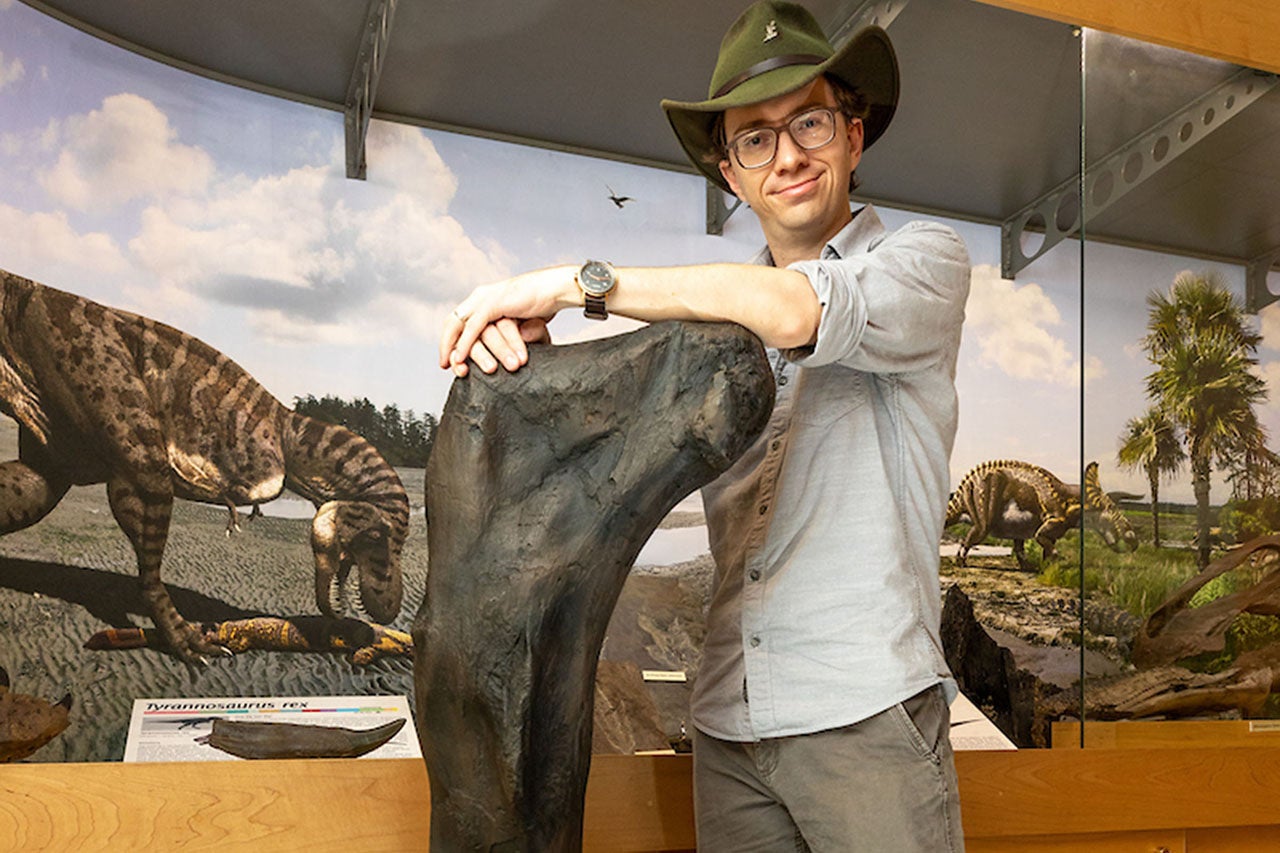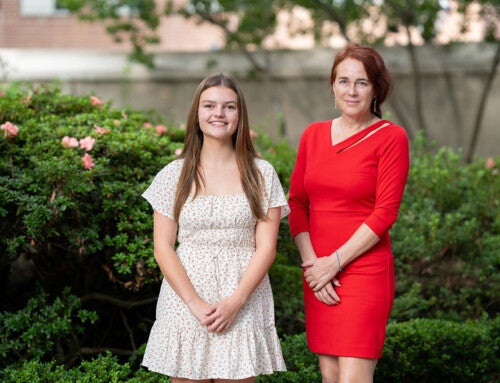For Scott Persons, the new curator at CofC’s Mace Brown Museum of Natural History, the pathway to his career can be traced back to the pages of a children’s book.
When Persons was 2½ years old, his father bought him a book called The Big Little Dinosaur. Persons loved it. As soon as his father finished reading him the book for the first time, Persons asked him to read it again, and again, and again.
“I was hooked,” he says.
It was that book that first introduced him to dinosaurs and eventually led him to his life as a paleontologist. Fast forward many years later to 2011 when Persons is a graduate student at the University of Alberta in Canada. One day, his mentor asked if he was interested in doing research on the bones of a recently discovered Tyrannosaurus rex.
That is when Persons was introduced to Scotty.
Scotty is the nickname of a T. rex discovered in Saskatchewan, Canada, in 1991. He is kind of a big deal. At an estimated 9.8 tons and 42 feet long, Scotty is the largest T. rex ever discovered.
With about 65 percent of Scotty’s skeleton unearthed, Persons and his fellow researchers spent a lot of time trying to find out more about Scotty’s existence on Earth 65 million years ago. They discovered that Scotty did not have an easy life.
Persons says their research concluded that Scotty had some serious injuries, including a broken jaw, impacted teeth, a broken rib and bite marks received from battle with other dinosaurs. But on the upside, Scotty lived for about 30 years, which is old for a T. rex.
“There will always be bigger discoveries to be made,” says Persons. “But as of right now, this particular Tyrannosaurus is the largest terrestrial predator known to science.”
After all of the research was concluded, he and Scotty went their separate ways. Scotty found a new home in the Royal Saskatchewan Museum, while Persons moved south last summer to curate the Mace Brown Museum and teach as an assistant professor in the geology department.
But Scotty and Persons still keep in touch. In fact, he and his former colleagues are working on using a laser scanner to map Scotty’s bones and eventually create a virtual T. rex.
“Massive dinosaur bones can be hard to work with,” explains Persons. “A digital skeleton can be pieced together easily and allows you to try out new positions. With engineering software, you can test the strength of the individual bones and find out how much weight they could bear. With a 3D printer, you can even produce miniature T. rex skeletons that fit in your desk drawer. Technology like that is changing how paleontology is done.”
Featured image of Scott Persons by Heather Moran




